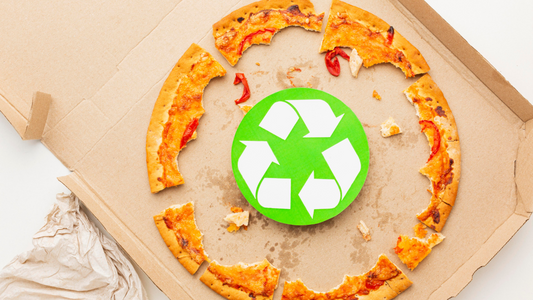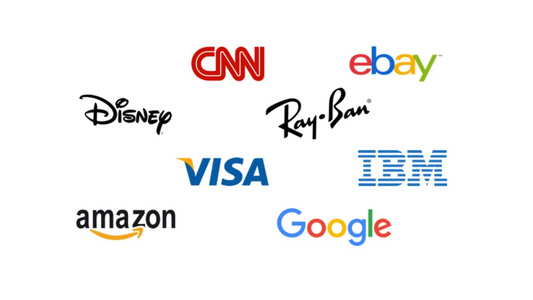Gable boxes are a popular packaging choice for food products. But have you ever wondered what paper is used to make gable box, specially for food apllication? In today article, we will discuss different types of paper used for gable boxes, the factors to consider when choosing paper.
- What Size Are Gable Boxes?
- Guide to Gable Box for Food Packaging: A Versatitle Packaging Solution
- How to Print On Gable Boxes: Step by Step from Designing to Quality Control in Detail
Kraft Paper - Common Paper Used to Make Gable Boxes
Kraft paper is a strong, durable, and sustainable paper type commonly used in gable box manufacturing. It is made from unbleached wood pulp, giving it a natural brown color.
Characteristics of Kraft Paper:
- Strength: Kraft paper is known for its high tensile strength, making it resistant to tearing and puncturing.
- Durability: It is durable and can withstand rough handling during transportation and storage.
- Sustainability: Kraft paper is generally considered more environmentally friendly than bleached paper, as it requires less processing and fewer chemicals.
- Recyclability: It is recyclable, making it a sustainable packaging option.
Applications in Gable Boxes:
- Milk Cartons: Kraft paper's strength and ability to withstand the weight of liquid make it an ideal choice for milk cartons, preserving the freshness and safety of dairy products.
- Juice Boxes: Its durability and moisture resistance ensure the integrity of juice boxes, preventing leaks and maintaining the quality of beverages.
- Other Food Items: Kraft paper's versatility extends to packaging a diverse range of food items, including soups, sauces, and frozen foods, providing reliable protection and preservation.
Gable boxes made from kraft paper offer a balance of strength, durability, and sustainability, making it a popular choice for food packaging applications.

Cardboard
Cardboard is widely used in the production of gable boxes. It offers a balance of strength and affordability, making it a versatile choice for various food products.
Types of Cardboard
- Corrugated Cardboard: This type consists of multiple layers of paperboard separated by a fluted layer, providing excellent cushioning and structural support. It is commonly used for larger gable boxes that require added protection for fragile contents.
- Solid Cardboard: Also known as folding carton board, this type is composed of a single layer of paperboard with a higher density. It is suitable for smaller gable boxes that prioritize aesthetics and print quality.
Advantages of Using Cardboard for Gable Boxes
- Strength and Durability: Cardboard offers sufficient strength to protect food products during transportation and storage, ensuring their safe arrival to consumers.
- Versatility: It can be easily customized to accommodate various product shapes and sizes, making it suitable for a wide range of food applications.
- Affordability: Compared to some other materials, cardboard is generally more cost-effective, making it a practical choice for many businesses.
- Recyclability: Cardboard is widely recyclable, contributing to environmental sustainability and reducing waste.
Disadvantages of Using Cardboard for Gable Boxes
- Moisture Sensitivity: Cardboard can be susceptible to moisture, which can affect its structural integrity and lead to product damage.
- Limited Barrier Properties: While cardboard offers reasonable protection, it may not provide the same level of barrier properties as other materials, such as aluminum or plastic, for highly sensitive products.
- Print Quality Limitations: The surface of cardboard may not be as smooth as some other materials, potentially affecting print quality and overall appearance.
Overall, cardboard is a versatile and practical choice for gable boxes, offering a good balance of strength, affordability, and recyclability. However, its suitability depends on the specific product requirements and environmental considerations.

Coated Paper
Coated paper, as the name suggests, is treated with a special coating to enhance its properties and make it suitable for specific applications. This coating can provide various benefits, such as moisture resistance, grease barrier, and improved print quality.
Purpose of Coating
- Moisture Resistance: Coatings can create a barrier that prevents moisture from penetrating the paper, protecting the packaged product from spoilage or damage.
- Grease Barrier: For food products that contain oils or fats, a grease-resistant coating helps prevent leakage and maintain product integrity.
- Print Quality: Coatings can improve the surface smoothness of the paper, resulting in better print quality and a more aesthetically pleasing appearance.
- Barrier Against Oxygen: Certain coatings can act as a barrier against oxygen, helping to maintain product freshness and prevent oxidation.
Types of Coatings Used
- Wax Coatings: These coatings are commonly used for moisture resistance and grease barrier properties. They are often applied to paper used for packaging food products such as milk cartons and juice boxes.
- Plastic Coatings: Plastic coatings, such as polyethylene or polypropylene, can provide excellent moisture and grease resistance, as well as improved barrier properties against oxygen. They are often used for packaging products that require a high level of protection, such as frozen foods or beverages.
- Lacquer Coatings: Lacquer coatings are used primarily for enhancing print quality and providing a glossy finish. They are often used for packaging products that emphasize visual appeal, such as premium food items or gift boxes.
In essence, coated paper offers a range of benefits that make it a valuable material for packaging applications.

Other Paper-Based Materials for Gable Boxes
In addition to kraft paper, cardboard, and coated paper, there are several other paper-based materials that can be used for gable box manufacturing. These materials offer unique properties and potential applications:
Recycled Paper
- Recycled paper is a sustainable option that reduces waste and conserves natural resources.
- While recycled paper may not always have the same strength as virgin paper, advancements in recycling technology have improved its quality and durability.
- Recycled paper can be used for a variety of gable box applications, especially for products that emphasize environmental responsibility.
Paperboard Laminates
- Paperboard laminates are created by combining paperboard with other materials, such as aluminum foil or plastic films. This lamination process can enhance properties like moisture resistance, grease barrier, and heat resistance.
- Paperboard laminates are particularly suitable for packaging products that require a high level of protection, such as frozen foods or beverages.
Factors Influencing Paper Selection
The choice of paper for gable boxes is a critical decision that directly impacts product safety, freshness, and overall packaging performance. Several factors must be carefully considered to ensure optimal packaging.
Product Type and Requirements
- Perishability: For highly perishable products, such as fresh produce or dairy items, paper materials with excellent barrier properties and moisture resistance are essential to prevent spoilage.
- Shelf Life: The desired shelf life of the product influences the choice of paper. For extended shelf life, materials with good barrier properties against oxygen and moisture are crucial.
- Packaging Needs: Specific packaging needs, such as heat resistance for hot products or puncture resistance for fragile items, must be considered when selecting paper.
Regulatory Compliance
- Food Safety Regulations: Paper materials used for food packaging must comply with stringent food safety regulations to ensure the safety of consumers.
- Environmental Standards: Businesses must adhere to environmental standards and regulations, such as those related to recyclability and sustainability.
Cost and Sustainability
- Economic Considerations: The cost of paper materials is a significant factor to consider. Businesses must balance cost with performance and sustainability requirements.
- Eco-Friendly Options: Increasingly, consumers and businesses are seeking eco-friendly packaging solutions. Recycled paper, sustainable forestry practices, and biodegradable materials are becoming more popular choices.
By carefully evaluating these factors, businesses can make informed decisions about paper selection for their gable boxes, ensuring that the packaging meets product requirements, complies with regulations, and aligns with sustainability goals.
Conclusion
Gable boxes depend on the right paper. Kraft paper, cardboard, coated paper, and recycled paper are popular choices. Consider product type, regulations, cost, and sustainability. Sustainable options are trending. Informed choices ensure your gable box packaging meets requirements, complies with regulations, and contributes to a more sustainable future.









